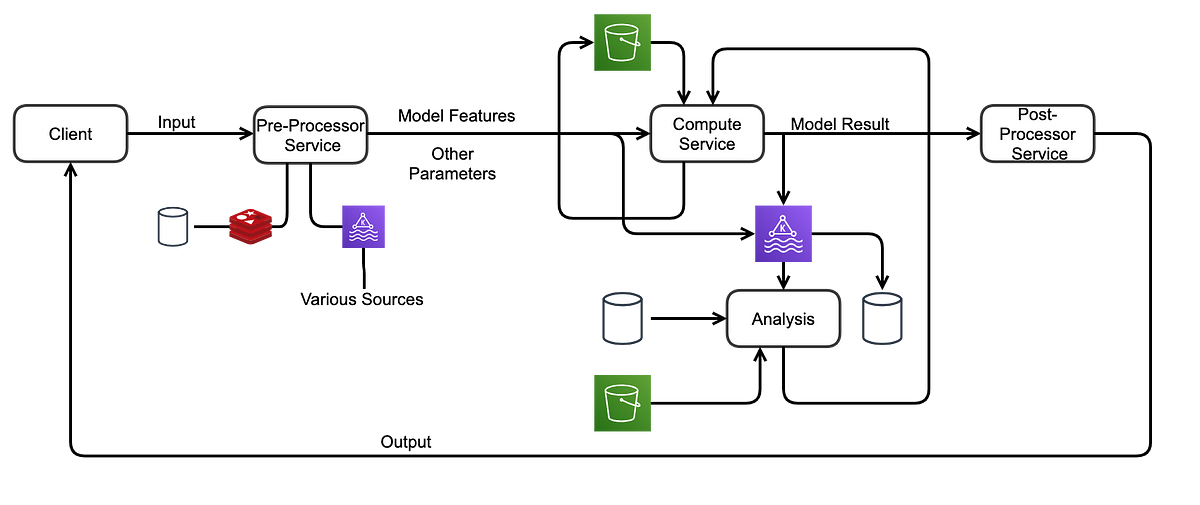This story will answer most of the questions that come to your mind while thinking of how to build a platform that can help you deploy your AI model overproduction or what all we need to look into a platform for the same.
Architecture

Components
Before we go into the details of the specific components of the above architecture and talk about the engineering side, let’s learn a bit about the training process.

Model Training Proccess
So, the model training process is majorly offline. The model training is mainly performed by Data Scientists and Statisticians. These people jot down the requirements, collect data via running various SQL queries over the databases, then comes the data cleaning and feature selection process. After the data is prepared they train a model that is suitable for the particular use case or business requirement, do the validation and testing. And finally, you have the model, to be deployed in production. The model is provided to the developers in various formats depending on the libraries/language used to train the model, say in form of a pickle file or PMML file or any other format.
Now as an engineer its out responsibility to come up with a platform on which we can deploy these trained models and in most of the cases run them in real-time, collect the input and output that goes in and comes out of the model and in some cases provided the feedback, retrain the model.
Now as promised let’s deep dive into the engineering side after we have the trained model with us.

Brief Overview
The above shows is a brief overview of how the whole platform looks like. In majorly every Machine Learning System we will see these four components.
- Client
- Pre-Processor Service
- Compute/Deployment Service
- Post-Processor Service
#machine-intelligence #architecture #machine-learning #design-thinking #system-design-project
